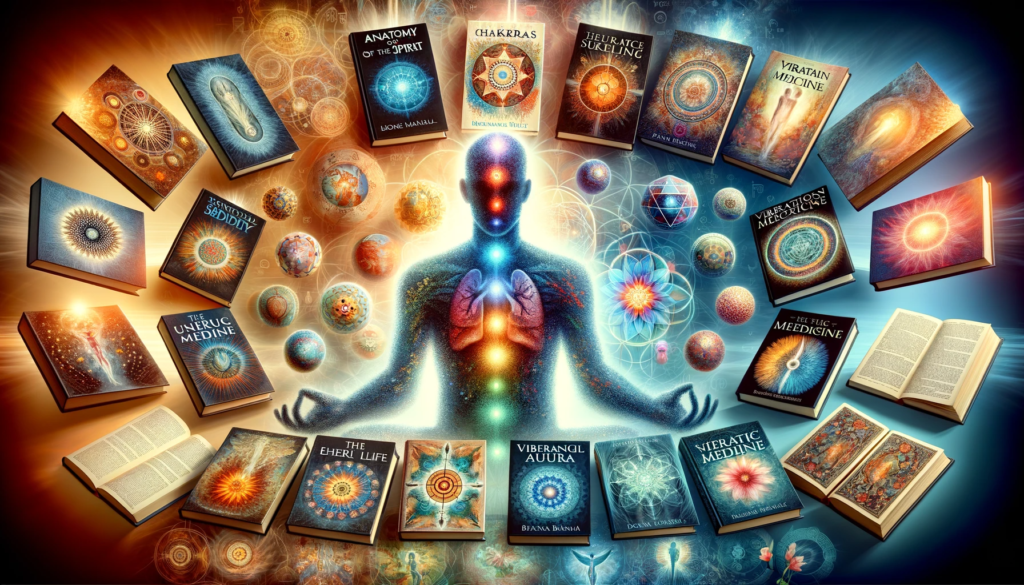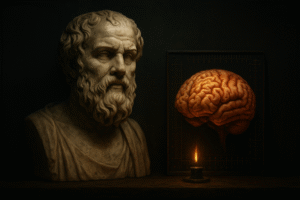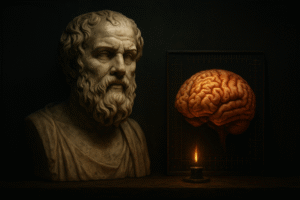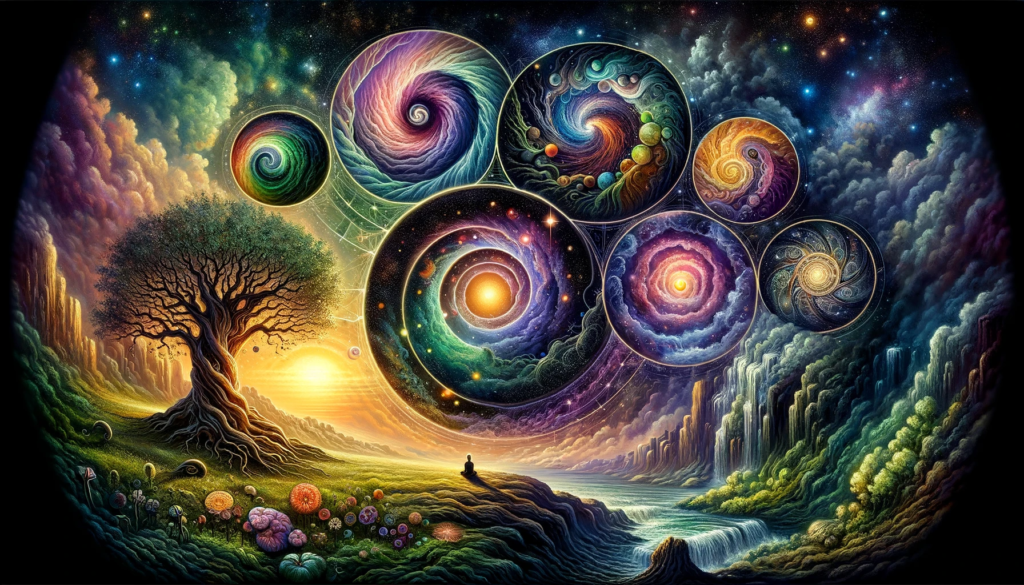
Introduction: Setting the Stage with an Artist’s Perspective
What are the seven subtle bodies and how do they connect us to the deeper realms of art and spirituality?
In the realm of human experience, much like the layers of a character in a film, there lies a depth that transcends the visible, reaching into the very essence of what it means to be. The exploration of the seven subtle bodies in humans is a journey that extends beyond the ordinary, delving into an esoteric understanding of our innermost being. This concept, deeply rooted in various spiritual traditions and philosophies, seeks to unravel the complex architecture that composes our total existence.
Beyond the tangible realm of the physical body are additional layers, each distinct in function and characteristics, together forming the complete tapestry of the human experience. These layers, or bodies, present a more profound and nuanced view of our existence, offering insights into the intricate interplay of matter, energy, and spirit. As an artist, the allure of this exploration lies in its richness and complexity, akin to the intricate narratives woven in the world of cinema. This journey into the seven subtle bodies promises not just a deeper understanding of ourselves but also a broader perspective on the essence that animates our physical form.
The Seven Bodies: Explanation and Artistic Analogy
- Physical Body
- How does the physical body serve as the foundation for our spiritual journey
- Explanation: The most palpable and visible body, composed of matter and subject to the laws of physics. It is the vehicle through which we experience the material world.
- Artistic Analogy: Like the set and costumes in a film, the physical body creates our tangible world, grounding our story in its physical environment.
- Etheric Double
- What role does the etheric double play in bridging our physical and spiritual experiences?
- Explanation: Known as the vital body, it is an ethereal copy of the physical body and serves as a bridge between the physical and the more subtle bodies. It is associated with vitality and energy.
- Artistic Analogy: Similar to the unseen energy that drives an actor’s performance, bringing vitality and presence to a character.
- Emotional Body
- How does the emotional body shape our experiences and interactions in art and spirituality?
- Explanation: This body houses our emotions and feelings, through which we experience joy, love, sadness, and fear. It is closely linked to our mental health and emotional well-being.
- Artistic Analogy: Comparable to the emotional depth of a character in a film, shaping the narrative and driving the plot with its range of feelings.
- Mental Body
- In what ways do our thoughts and beliefs in the mental body influence our artistic creativity and spiritual understanding?
- Explanation: The seat of our thoughts, beliefs, and reasoning. It influences our ability to process information and develop ideas.
- Artistic Analogy: Like a screenplay that guides the narrative of a film, our mental body drives the plot of our lives with our beliefs and thoughts.
- Spiritual (or Astral) Body
- What is the role of the spiritual body in expanding our artistic horizons and spiritual experiences?
- Explanation: The vehicle of consciousness outside the physical plane, related to out-of-body experiences and lucid dreaming.
- Artistic Analogy: Similar to surreal scenes in film that transcend ordinary experience, opening doors to other realms and expanding the narrative beyond the physical.
- Causal (or PDI) Body
- How does the causal body reflect our life’s journey in the realms of art and spirituality?
- Explanation: Associated with the causes and effects of our actions and thoughts throughout life, forming our spiritual identity and karma.
- Artistic Analogy: Reflects a character’s arc in a story, encompassing the theme and evolution of our life’s narrative.
- Atomic (or Atmic) Body
- What insights does the atomic body offer into our connection with the divine and its impact on artistic expression?
- Explanation: The highest body, linked to our connection with the divine and the ultimate purpose of the soul. It represents unity with the whole.
- Artistic Analogy: Represents the climax or the highest point of our narrative, akin to profound moments in cinema that resonate deeply and leave a lasting impression.
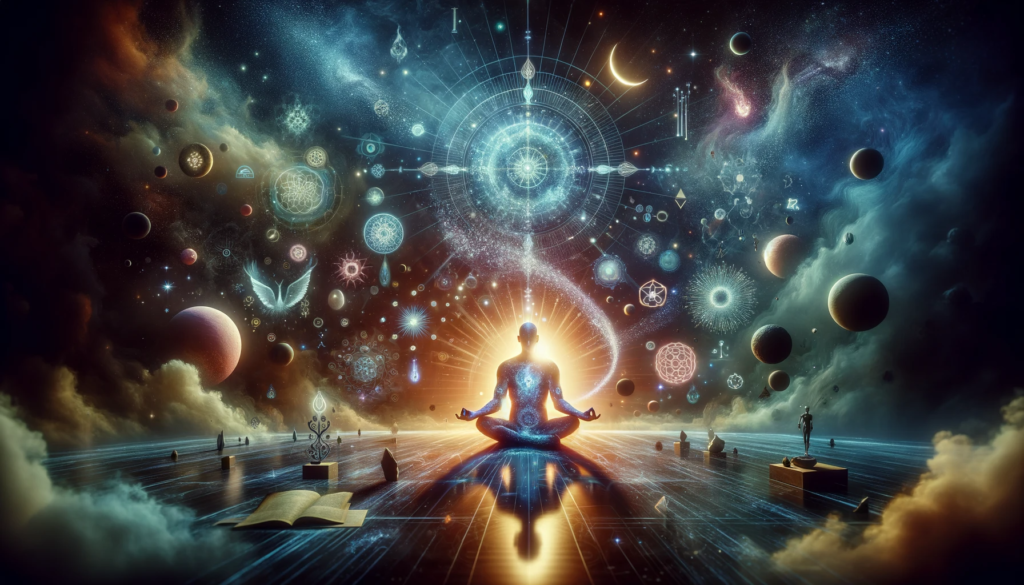
Interconnection and Mutual Influence: Explanation and Artistic Analogy
How do the interactions between the seven subtle bodies affect our overall well-being and artistic expression?
- Explanation: The seven bodies are not isolated entities; they are deeply interconnected, and changes in one can impact the others. Emotional trauma, for instance, might manifest as a physical illness, while negative thoughts can disrupt emotional equilibrium.
- Artistic Analogy: Think of a film where every element, from the soundtrack to the lighting, affects the overall mood and story. A change in the music score can alter the emotional tone, just as a shift in one subtle body can influence the others, creating a ripple effect throughout the being.
The Journey of Self-Knowledge: Explanation and Artistic Analogy
What can we learn about ourselves through the exploration of the seven subtle bodies, and how does this impact our artistic and spiritual growth?
- Explanation: Understanding the seven bodies is akin to embarking on a journey of self-discovery. Exploring each body helps us understand ourselves better and how we interact with the world. This journey is not just about our present reality but also encompasses our spiritual growth.
- Artistic Analogy: Like unraveling the layers of a complex character in a script, understanding the seven bodies involves delving into the depths of our psyche, uncovering motivations, desires, fears, and dreams. It’s a process similar to developing a multi-dimensional character in a story, revealing layers over time.
Traumas and Blockages: Explanation and Artistic Analogy
How can understanding and addressing traumas in the subtle bodies aid in healing and enhancing our creative and spiritual lives?
- Explanation: Each subtle body can be affected by specific traumas and blockages. For example, healing an emotional trauma requires working on the emotional body, highlighting the need for a holistic approach to healing.
- Artistic Analogy: Just as a flaw in a character’s backstory needs to be addressed within the context of their personal history, healing in one of the subtle bodies must be contextually appropriate. Focusing solely on the mental body to heal an emotional wound is like trying to fix a script issue without considering the character’s development or storyline.
Frequencies and Dimensions: Explanation and Artistic Analogy
What does the varying frequency and dimension of each subtle body reveal about our multifaceted existence?
- Explanation: Each of the seven bodies operates at its unique frequency and dimension. The physical body aligns with the tangible, material world, while the subtler bodies resonate with higher, less tangible planes of existence. This concept underscores our multi-dimensional interactions within the universe.
- Artistic Analogy: Imagine a film using different visual and auditory techniques to portray various states of reality. The physical body is like standard visuals depicting the real world, while the subtler bodies are akin to special effects or dream sequences that convey higher states of consciousness or alternate realities.
Growth and Evolution: Explanation and Artistic Analogy
In what ways does the development of the seven subtle bodies contribute to our personal evolution in art and spirituality?
- Explanation: Our growth transcends the physical realm, encompassing emotional, mental, and spiritual development. Every thought, decision, and action shapes the evolution of our entire being, with enlightenment being the harmonious development of all seven bodies.
- Artistic Analogy: This can be likened to the comprehensive development of a film project. Just as a film evolves from an idea to a full-fledged production through various stages, our being evolves through the nurturing and development of all aspects, from physical to spiritual.
The Importance of Applying Knowledge: Explanation and Artistic Analogy
How can applying our understanding of the seven subtle bodies transform our practical life and artistic endeavors?
- Explanation: Understanding the seven bodies is not merely an academic exercise; it must be integrated and applied in daily life. The way we apply this knowledge profoundly influences our personal growth and evolution.
- Artistic Analogy: Similar to how a filmmaker must apply their knowledge of film theory in practical filmmaking, we must use our understanding of the seven bodies in real-life scenarios. This application is what turns theory into transformative action.
Material and Spiritual Integration: Explanation and Artistic Analogy
How does recognizing the interplay between the material and spiritual realms in the seven subtle bodies enrich our life and artistic work?
- Explanation: The concept of the seven bodies blurs the line between material and spiritual, illustrating that all existence is a spectrum of energy frequencies. This understanding encourages a more holistic approach to life.
- Artistic Analogy: Think of a film that seamlessly blends realistic scenes with symbolic or metaphysical elements. This integration represents the interplay between the material and spiritual, showing that they are different expressions of the same energy, much like different genres or styles within the art of filmmaking.
Practical Implications: Explanation and Artistic Analogy
What are the practical implications of understanding the seven subtle bodies in our day-to-day life and artistic practice?
- Explanation: Understanding the seven bodies goes beyond theoretical knowledge; it has tangible implications in our daily lives. By recognizing the role of each body, such as how the emotional body influences our feelings and responses to trauma, we can approach personal development and healing more effectively. Similarly, a better grasp of the mental body can enhance our cognitive abilities and decision-making processes.
- Artistic Analogy: This can be compared to the practical skills required in filmmaking. Just as understanding lighting and sound impacts the quality of a film, understanding the different subtle bodies can improve our life’s ‘production quality’. Knowledge of the emotional body, for instance, is like understanding character development, which helps in managing real-life emotional scenarios more skillfully.
The Role of Free Will: Explanation and Artistic Analogy
How does free will shape our journey through the seven subtle bodies and influence our creative and spiritual paths?
- Explanation: Free will is central to our development across the seven bodies. Just as we have choices in our actions and thoughts, these decisions shape the evolution and quality of our being across all levels.
- Artistic Analogy: Think of free will as the role of a director in a movie. The director has the freedom to choose the film’s direction, just as we have the autonomy to steer our growth and development. Our choices, like a director’s, influence the final outcome of our life’s story.
Scientific Perspective on the Mind-Body Connection
What does modern science reveal about the mind-body connection, and how does this knowledge support our artistic and spiritual practices?
- Explanation: Modern science validates the interconnectedness of the mind and body. Research, such as that from Washington University School of Medicine on the Somato-Cognitive Action Network (SCAN), demonstrates a direct correlation between mental and physical states. This network indicates that cognitive processes and bodily functions are intrinsically linked, providing a scientific foundation for practices like meditation that harmonize mind and body.
- Artistic Analogy: This can be likened to the relationship between a film’s script and its visual representation. Just as a script’s ideas are manifested physically on screen, our mental state is expressed in our physical body. The SCAN research underscores this parallel, showing how mental concepts (like a script) directly influence physical expressions (like a film’s scenes).
Conclusion:
The Harmonization of Knowledge and Practice with an Artistic Insight
In grasping the essence of the seven bodies, our journey transcends mere understanding to a comprehensive embrace of human nature, seamlessly blending esoteric wisdom with the practicalities of daily life. This exploration not only deepens our insight into ourselves but also illuminates our place in the cosmos, uncovering the dynamic interplay between the various facets of our being. It’s a path that offers more than theoretical wisdom; it provides practical tools for personal growth and evolution, urging us to cultivate lives that are both integrated and harmoniously balanced.
Yet, this exploration is merely the opening scene in a much grander narrative. Each of the seven bodies opens up a vast landscape of study and practice, beckoning us on a continuous journey of discovery and transformation. Delving into the interconnected nature of these bodies, we begin to harmonize our physical, emotional, mental, and spiritual aspects. This process, akin to the unfolding story of a richly layered film, invites us on a path of perpetual growth and self-realization, where each step forward reveals new depths and perspectives, much like the evolving journey of a complex character on screen.

Enlightening Reads: Essential Books for Further Exploration of the Seven Subtle Bodies
“Anatomy of the Spirit” by Caroline Myss: This book offers a unique blend of spiritual insight and health, integrating the wisdom of energy medicine with the physical aspects of wellbeing. Myss explores how spiritual and emotional factors can directly impact physical health.
“The Subtle Body: A Complete Guide to Energy Medicine” by Cyndi Dale: Dale’s comprehensive guide is an invaluable resource for understanding energy medicine and the anatomy of the subtle body. It covers a wide range of topics from energy healing techniques to the structure of the energy body.
“Wheels of Life: A User’s Guide to the Chakra System” by Anodea Judith: Although under a different title, Anodea Judith’s book is a thorough exploration of the chakra system, detailing the psychology and function of each chakra and offering practical advice for working with these energy centers.
“The Human Aura” by Elizabeth Clare Prophet: While not exactly titled “The Seven Subtle Bodies and the Chakras,” Prophet’s work delves into the human aura and its spiritual significance. The book is a key resource for understanding the aura’s colors, energy, and influence on our lives.
“Vibrational Medicine: The #1 Handbook of Subtle-Energy Therapies” by Richard Gerber: Gerber’s book examines the intersection of spirituality, science, and health, providing a detailed look into how subtle-energy therapies can influence healing and wellbeing.
“The Etheric Double” by Arthur E. Powell: Powell’s classic work focuses on the concept of the etheric double, an essential component of the human energy system. It offers in-depth insights into the structure and functions of this subtle body.
These books collectively provide a well-rounded understanding of the subtle bodies, energy medicine, and the chakras, making them essential reads for anyone pursuing knowledge in these areas.
